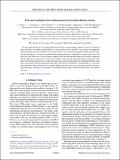Files in this item
Extremely imbalanced two-dimensional electron-hole-photon systems
Item metadata
| dc.contributor.author | Tiene, A. | |
| dc.contributor.author | Levinsen, J. | |
| dc.contributor.author | Parish, M. M. | |
| dc.contributor.author | MacDonald, A. H. | |
| dc.contributor.author | Keeling, J. | |
| dc.contributor.author | Marchetti, F. M. | |
| dc.date.accessioned | 2020-03-16T15:30:01Z | |
| dc.date.available | 2020-03-16T15:30:01Z | |
| dc.date.issued | 2020-04-28 | |
| dc.identifier | 266865419 | |
| dc.identifier | 24cef722-3634-462c-bccd-ca029422020d | |
| dc.identifier | 000602775900003 | |
| dc.identifier | 85097885579 | |
| dc.identifier.citation | Tiene , A , Levinsen , J , Parish , M M , MacDonald , A H , Keeling , J & Marchetti , F M 2020 , ' Extremely imbalanced two-dimensional electron-hole-photon systems ' , Physical Review Research , vol. 2 , no. 2 , 023089 . https://doi.org/10.1103/PhysRevResearch.2.023089 | en |
| dc.identifier.issn | 2643-1564 | |
| dc.identifier.other | ArXiv: http://arxiv.org/abs/1911.08808v1 | |
| dc.identifier.other | ORCID: /0000-0002-4283-552X/work/73293311 | |
| dc.identifier.uri | https://hdl.handle.net/10023/19661 | |
| dc.description | Funding: AHM and JK acknowledge financial support from a Royal Society International Exchange Award, IES\R2\170213. JK acknowledges financial support from EPSRC program “Hybrid Polaritonics” (EP/M025330/1). | en |
| dc.description.abstract | We investigate the phases of two-dimensional electron-hole systems strongly coupled to a microcavity photon field in the limit of extreme charge imbalance. Using variational wave functions, we examine the competition between different electron-hole paired states for the specific cases of semiconducting III-V single quantum wells, electron-hole bilayers, and transition metal dichalcogenide monolayers embedded in a planar microcavity. We show how the Fermi sea of excess charges modifies both the electron-hole bound state (exciton) properties and the dielectric constant of the cavity active medium, which in turn affects the photon component of the many-body polariton ground state. On the one hand, long-range Coulomb interactions and Pauli blocking of the Fermi sea promote electron-hole pairing with finite center-of-mass momentum, corresponding to an excitonic roton minimum. On the other hand, the strong coupling to the ultra-low-mass cavity photon mode favors zero-momentum pairs. We discuss the prospect of observing different types of electron-hole pairing in the photon spectrum. | |
| dc.format.extent | 16 | |
| dc.format.extent | 1967810 | |
| dc.language.iso | eng | |
| dc.relation.ispartof | Physical Review Research | en |
| dc.subject | QC Physics | en |
| dc.subject | TK Electrical engineering. Electronics Nuclear engineering | en |
| dc.subject | DAS | en |
| dc.subject.lcc | QC | en |
| dc.subject.lcc | TK | en |
| dc.title | Extremely imbalanced two-dimensional electron-hole-photon systems | en |
| dc.type | Journal article | en |
| dc.contributor.sponsor | The Royal Society | en |
| dc.contributor.sponsor | EPSRC | en |
| dc.contributor.institution | University of St Andrews. School of Physics and Astronomy | en |
| dc.contributor.institution | University of St Andrews. Condensed Matter Physics | en |
| dc.identifier.doi | https://doi.org/10.1103/PhysRevResearch.2.023089 | |
| dc.description.status | Peer reviewed | en |
| dc.identifier.grantnumber | IES/R2/170213 | en |
| dc.identifier.grantnumber | EP/M025330/1 | en |
This item appears in the following Collection(s)
Items in the St Andrews Research Repository are protected by copyright, with all rights reserved, unless otherwise indicated.

